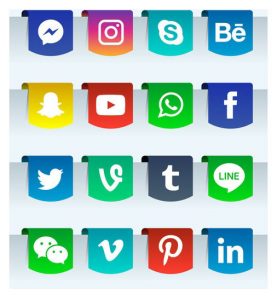What are the 3 Disadvantages to 3D printing?
3D printing is a viable option for business owners who are considering this method of manufacturing. Before making any decisions, you need to understand how 3D printing works and what your options are.

Rapid prototyping decreases lead times and speeds revenue flow
Rapid prototyping can be a cost-effective and fast way to get products to market. Its benefits can be found in reduced lead times and increased revenue flow.
Rapid prototyping is a technique used to create highly accurate prototypes.There You Have It 3D This technique can be used throughout the engineering process, starting with the product design and ending up in mass production. By integrating feedback earlier, it reduces risk of costly errors in the manufacturing stage.
In addition to the benefits of faster production, rapid prototyping also offers more flexibility. As a result, designers and manufacturers can experiment with different design iterations and refine them over time.
Rapid prototyping can either be done in-house or externally. Most often, it is used in conjunction or additive manufacturing. A 3D printer is capable of creating the next iteration in a matter of hours.
Because the process is automated, it is possible to reduce labor costs. This eliminates the requirement for costly tooling and molds. These may be required with traditional prototyping processes.
While it is common to use a combination of rapid prototyping technologies, the majority of rapid prototyping uses layered additive manufacturing. A layer of photosensitive light is solidified by computer-controlled ultraviolet radiation.
Vacuum casting is another method for producing rapid prototypes. This process uses silicone moulds and forces semi-solid materials into a desired shape.
Other types of rapid prototyping include compression sintering, which involves forcing a liquid material into the desired shape. Also, subtractive prototyping is a method of carving a block of material.
The best prototyping techniques are suited to specific product applications. If you’re designing a medical device, for example, you might need to ensure that your part fits within the medical parameters.
Besides saving time, rapid prototyping can reduce material waste. This eliminates the need to make custom-made products. It is also highly precise, which allows designers to test their ideas before spending time or money developing them.
The prototyping process is an important part of product engineering and product development. A physical model of the final product is a good way to evaluate its function and appearance.
Materials are limited compared to conventional product materials
There are three main types of 3D printing – Fused deposition modeling (FDM), stereolithography (SLA), and additive manufacturing (AM). They each provide unique benefits based on their specific processes. Moreover, each offers their own advantages and disadvantages.
FDM is a more flexible method than other ones. FDM can also create complex geometrical structures at high precision. However, its use in mass production is limited. additive manufacturing In addition, a number of pitfalls can hinder the quality of its outputs. The technology should not be considered a panacea but a novelty.
One of its major limitations is the absence of a universally scalable block material. This is especially true of polymers used to make composites. Even worse, it is not always easy to find the most efficient and cost-effective material. Aside from the limitations of the materials themselves, the process also requires a highly skilled and dedicated workforce. There are many startups in the sector looking to revolutionize the way we think of additive manufacturing.
3D printing has the ability to create microdevices that are similar to tablets and smartphones. This is one of its most striking features. Another is its ability to manufacture objects of all shapes and sizes. Additionally, lighter products can help improve automobile fuel economy. It is possible to create a vehicle that meets the needs of the automotive industry today without sacrificing quality by using the right technologies.
One of the perks of 3D printing is the ability to customize its designs to fit the needs of the user. This technology has allowed for many innovations in the fields of water treatment and air pollution monitoring. Similarly, it has sparked interest in STEM careers. It has also opened up new markets and opportunities for the future. It has also allowed for a variety of experimentation in the field product design.
3D printing could revolutionize the industrial landscape. Not only does it allow for more personalized products, it also allows for less waste and faster time to market.
3D printing cannot compete with traditional manufacturing processes.
Traditional manufacturing processes are industrial processes that have been used for decades and can amortize both upfront costs as well as running expenses. These methods offer a wider selection of materials and repeatability. They can be costly and labor-intensive.
Additive Manufacturing, however, is a method of manufacturing that allows you to produce parts quickly and has a higher flexibility. This technology is expected to replace traditional manufacturing methods in future.
The key difference between these two methods is that additive manufacture uses layer-by–layer fabrication of 3D physical model layers. It can also be customized in many ways.
While traditional manufacturing methods may be cheaper, they can limit the design of a part. 3D printing, on the other hand can produce complex geometric structures and a wide variety of materials. It can also be used to make tools, parts, and finished components.
As with any new technology, it’s important to investigate how it works before relying on it for your own manufacturing process. This method doesn’t preserve the mechanical properties. If you want a product that is accurate, you may consider a different route.
While 3D printing does have some advantages over traditional manufacturing processes, it is not an option for mass production. Some of the cost-savings features that 3D printing offers can hurt your bottom line.
Despite its limitations, 3D printing is the most cost-effective way to produce a small quantity of a customised product. It is capable of producing complex geometries quickly.
However, the best advantage is the ability to produce parts in hours. This capability is especially useful for rapid prototyping. This ability can also be used to fix design problems before they become production problems.
Depending on the size of your project, you can choose between several types of techniques. Some of the most common include laser cutting, fused deposition modeling (FDM), and injection molding.
Injection molding is a good option if you require a very precise part.
3D printing can delaminate under certain stresses
You may need to spend more time cleaning or repairing parts if your 3D printer is making parts with design errors. This can cause production to slow down and impact your quality control. However, there are many ways to fix the inaccuracies. You have several options, including chemical soaking and air drying. Any of these options can be used for cleaning up your print’s surface. The type of clean up you perform will depend on the materials you’re printing and the intended application of the print.
You will need to heat the plate sufficiently if you are printing an item in high temperatures. You can reduce warping of your plastic by making sure that the surface temperature of the build plate is lower than the glass point of your filament. It’s also important to remember that some printable materials cannot be recycled. Also check out the 3d printing in construction Using a low-warp plastic is a good idea, as it can accommodate larger contraction strains without warping. Consider the size and intended use of your print, as well as the technology you are using.
Avoid excessive thermal stresses when trying to correct inaccuracies within your print. These can cause warping and cracking, as well as delamination. There are many ways to reduce the stress caused by these types of stresses, but it is best to not cool your prints too fast.





